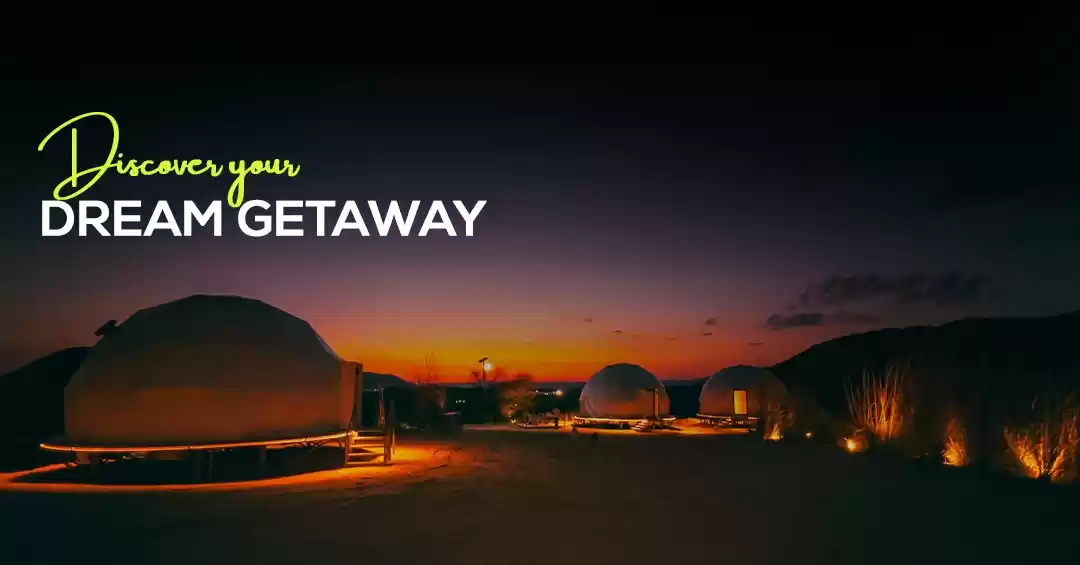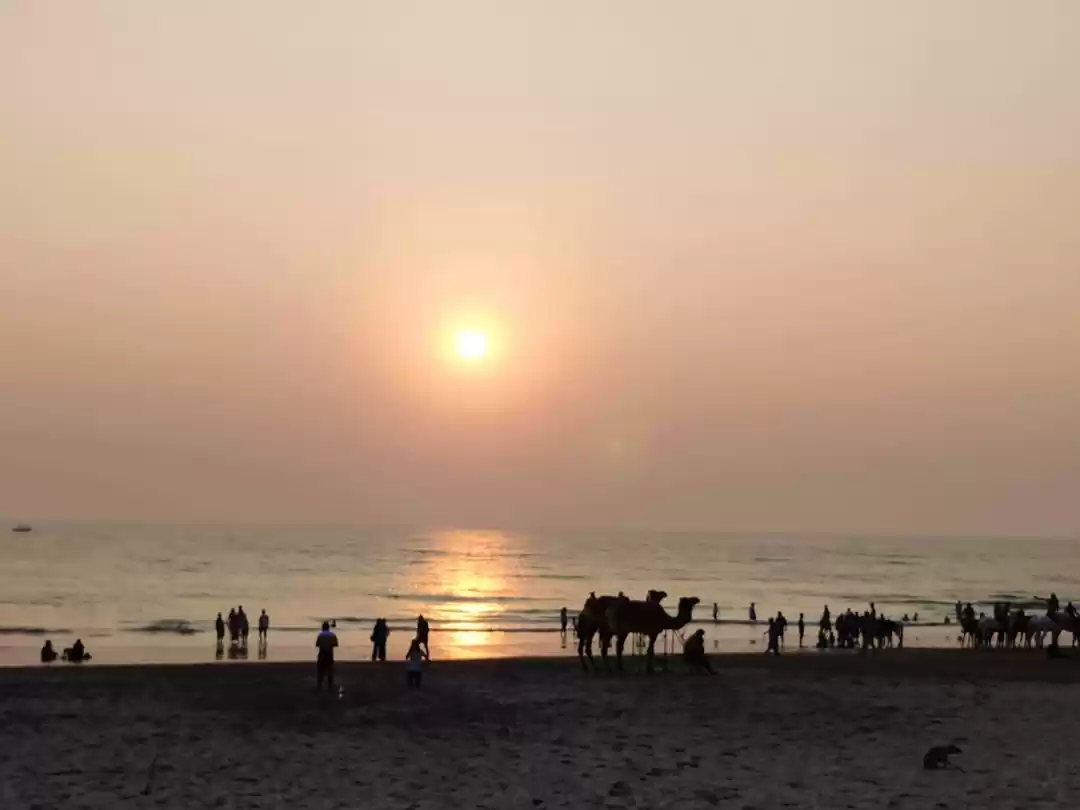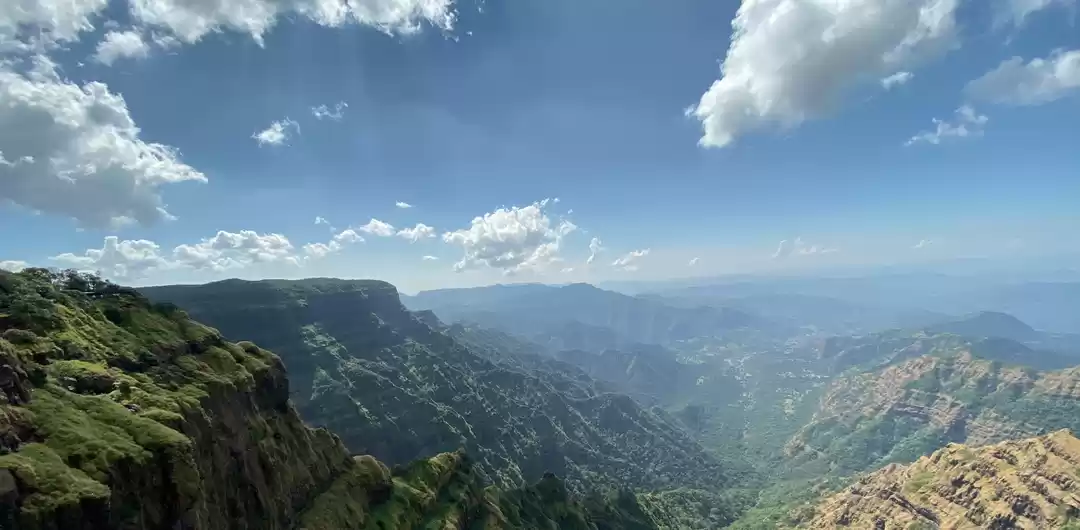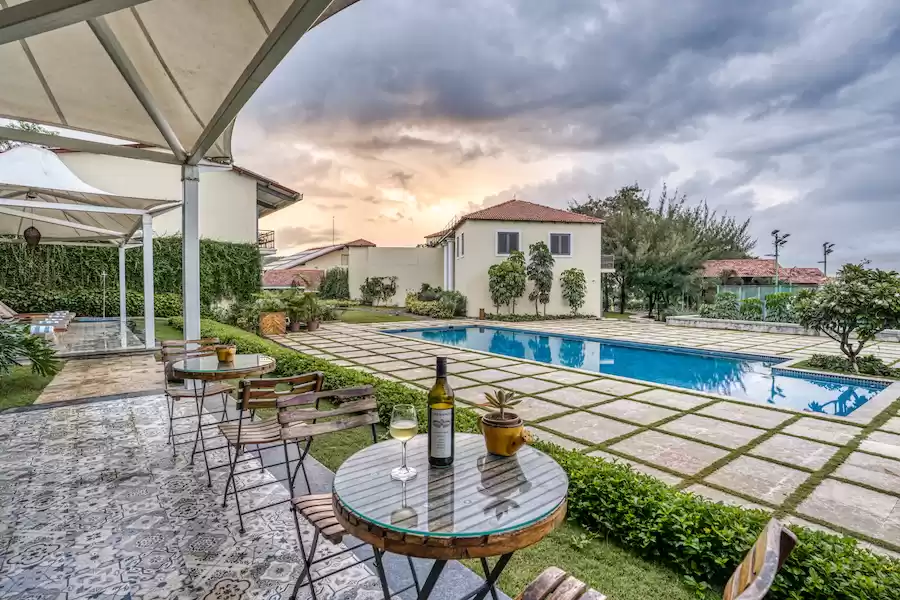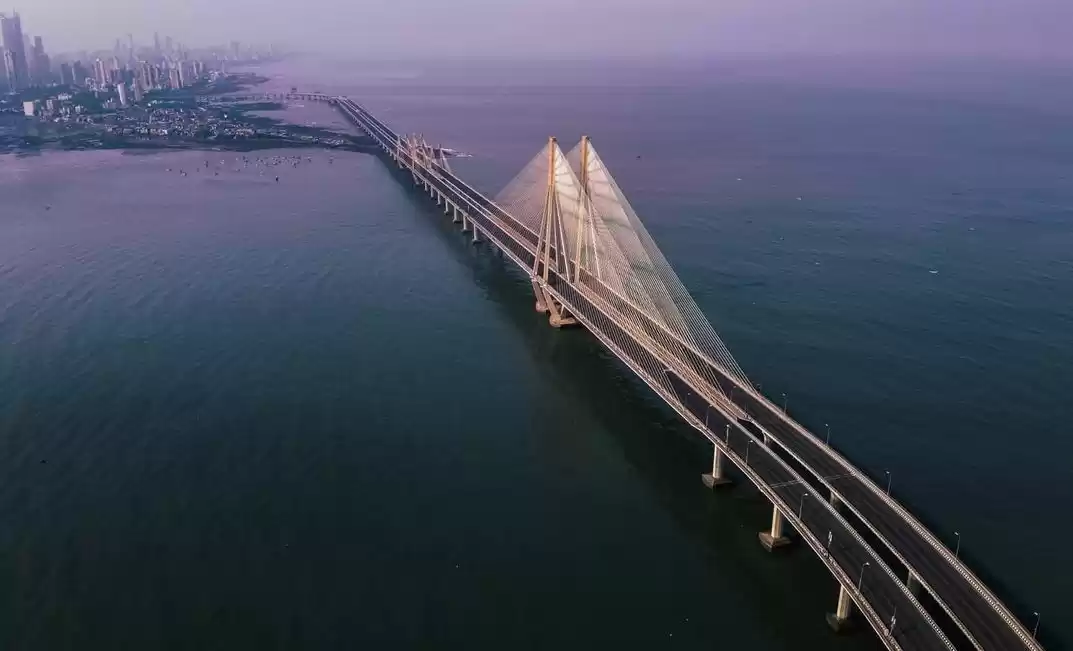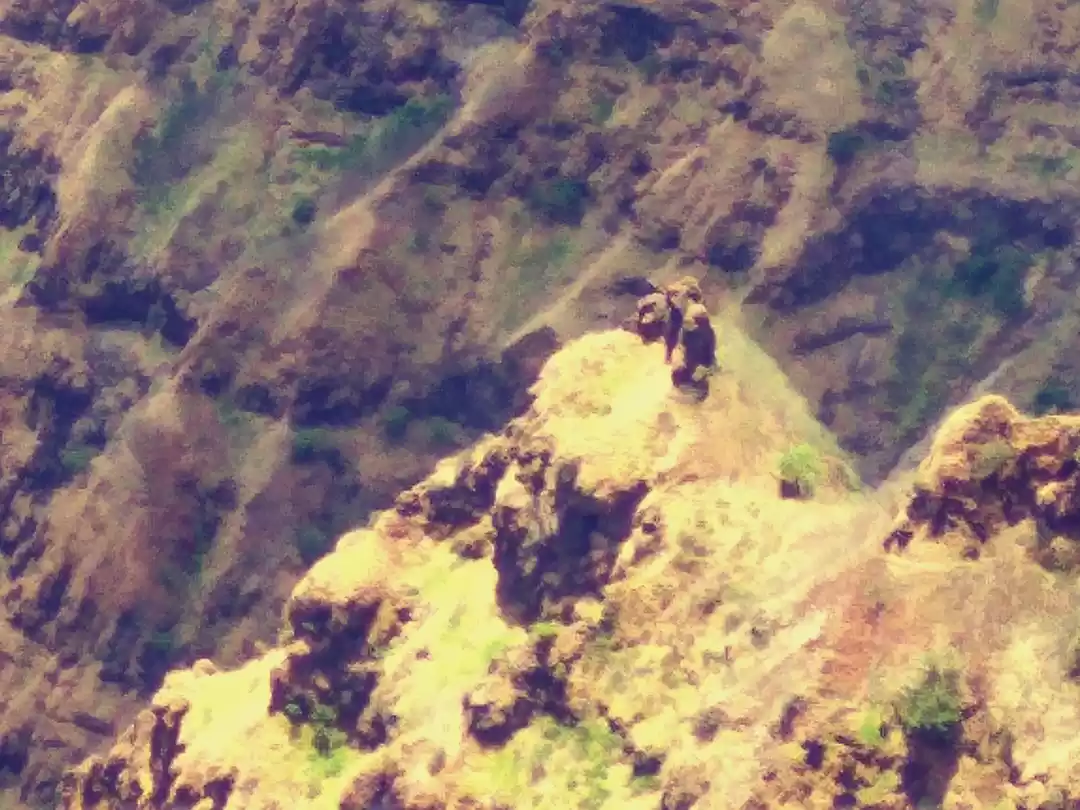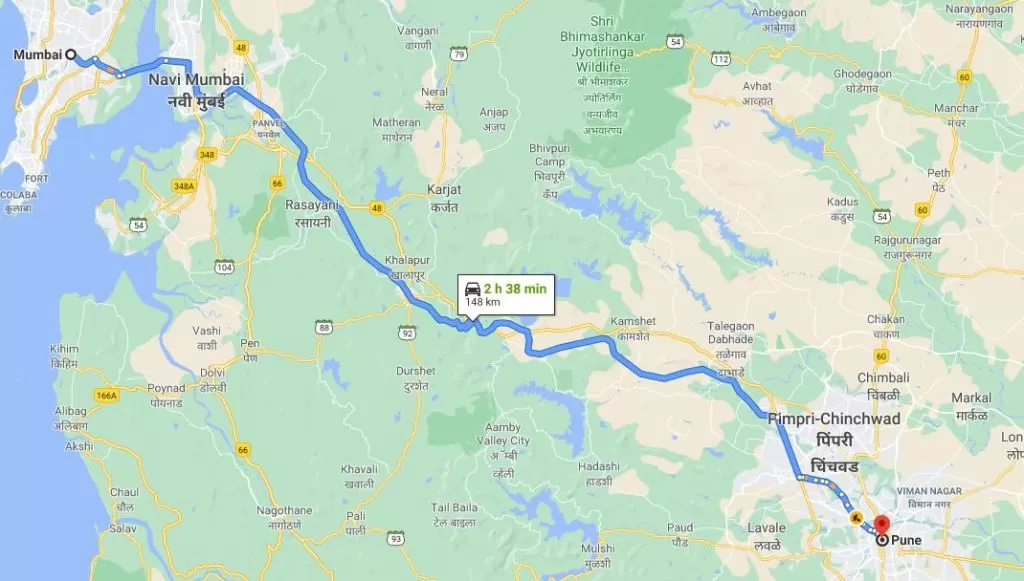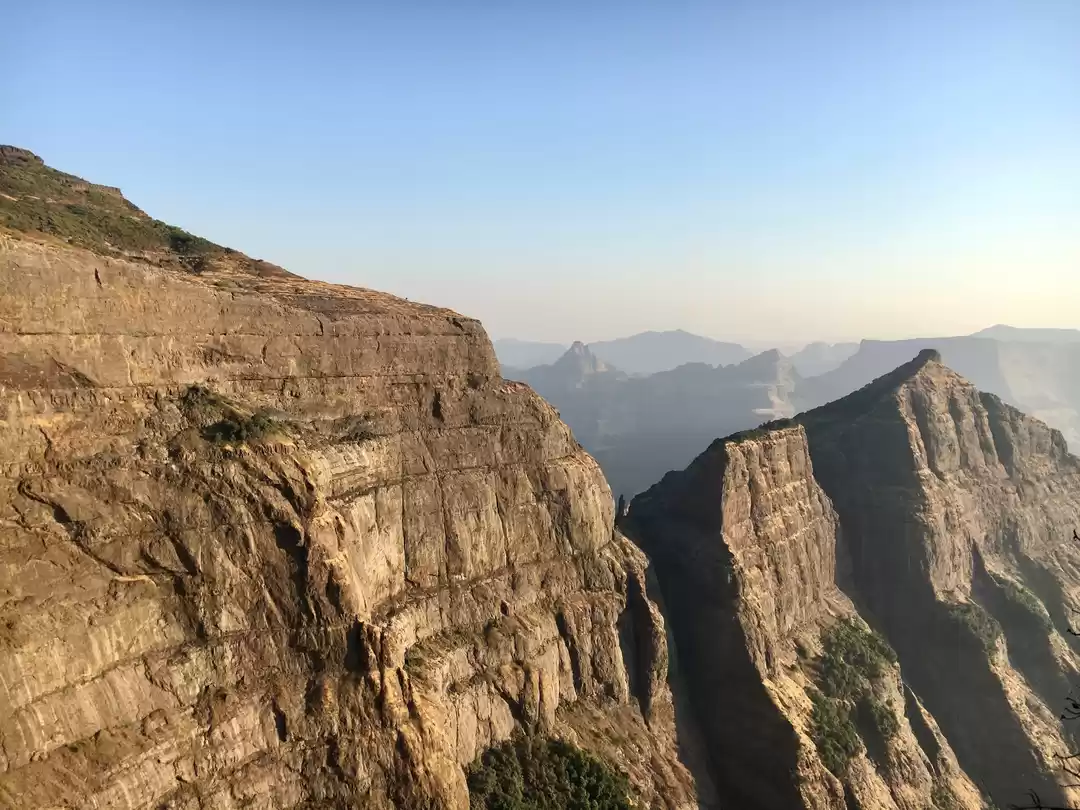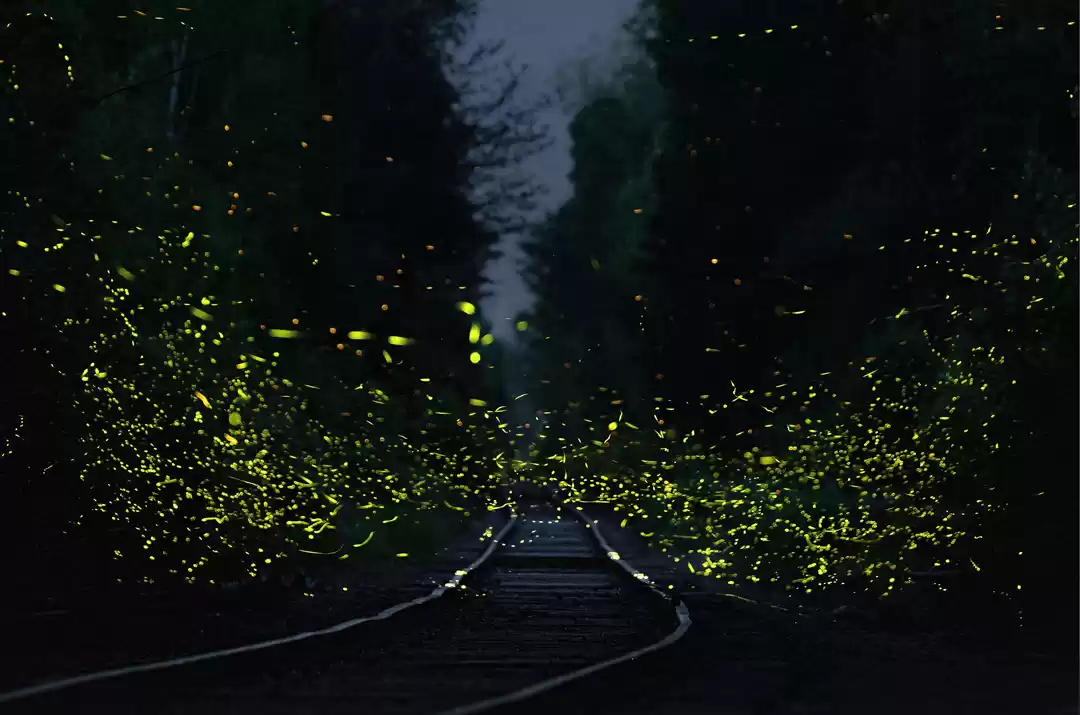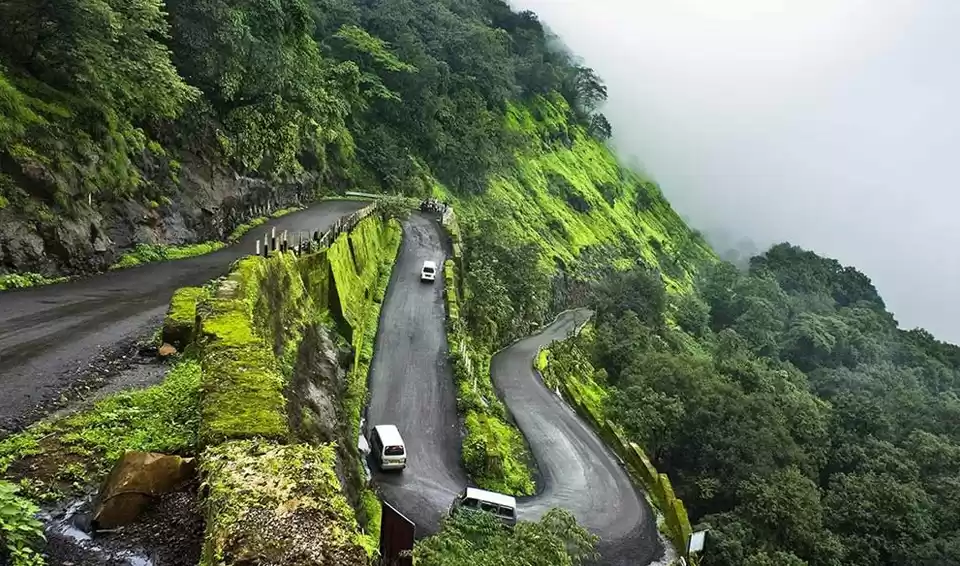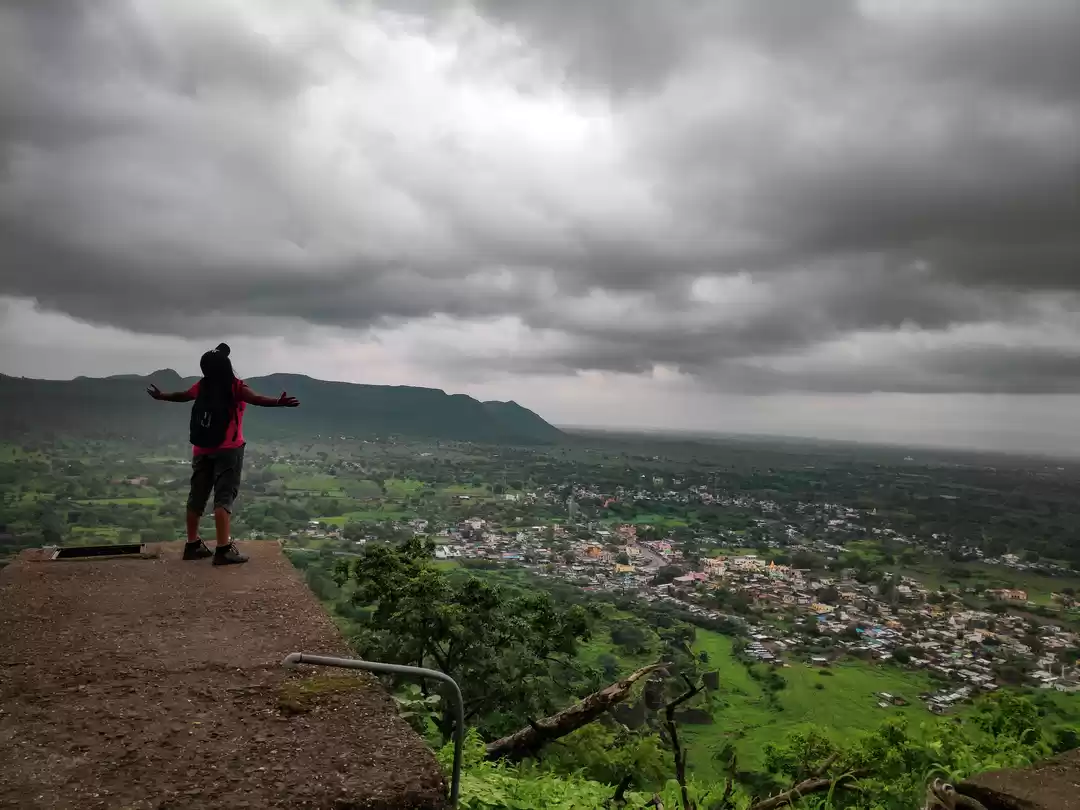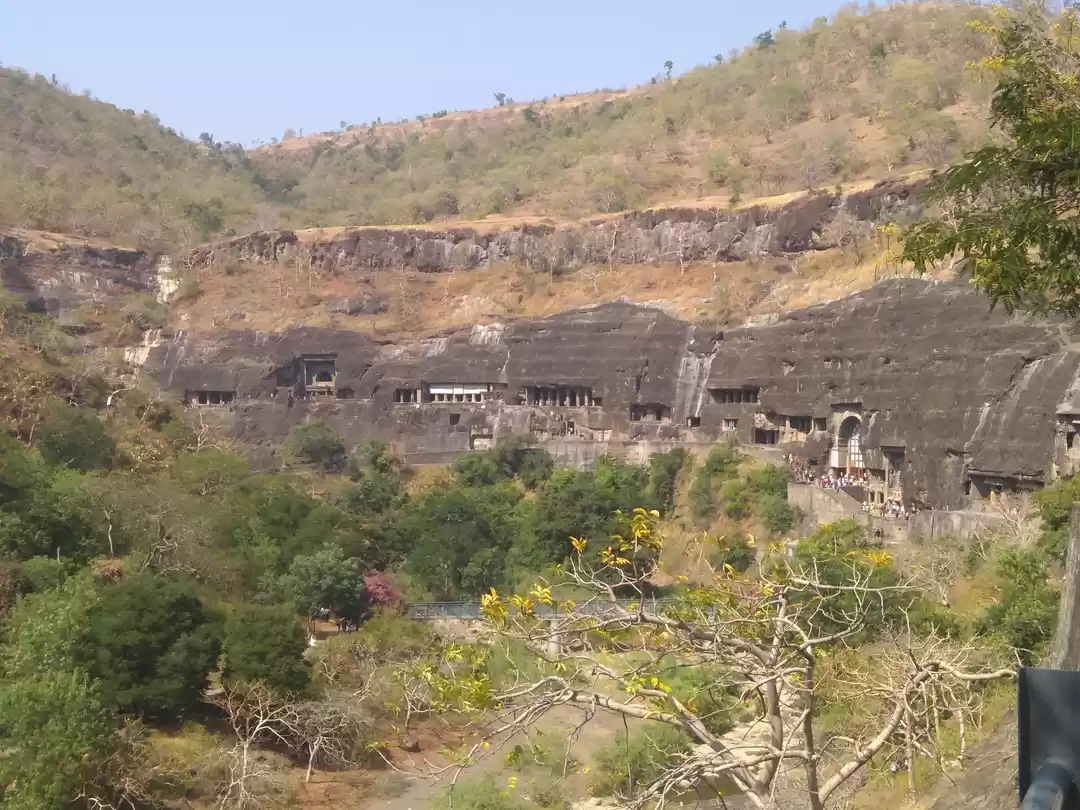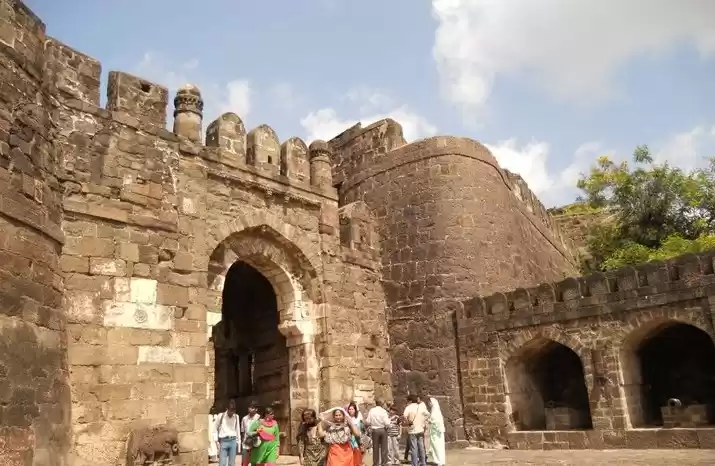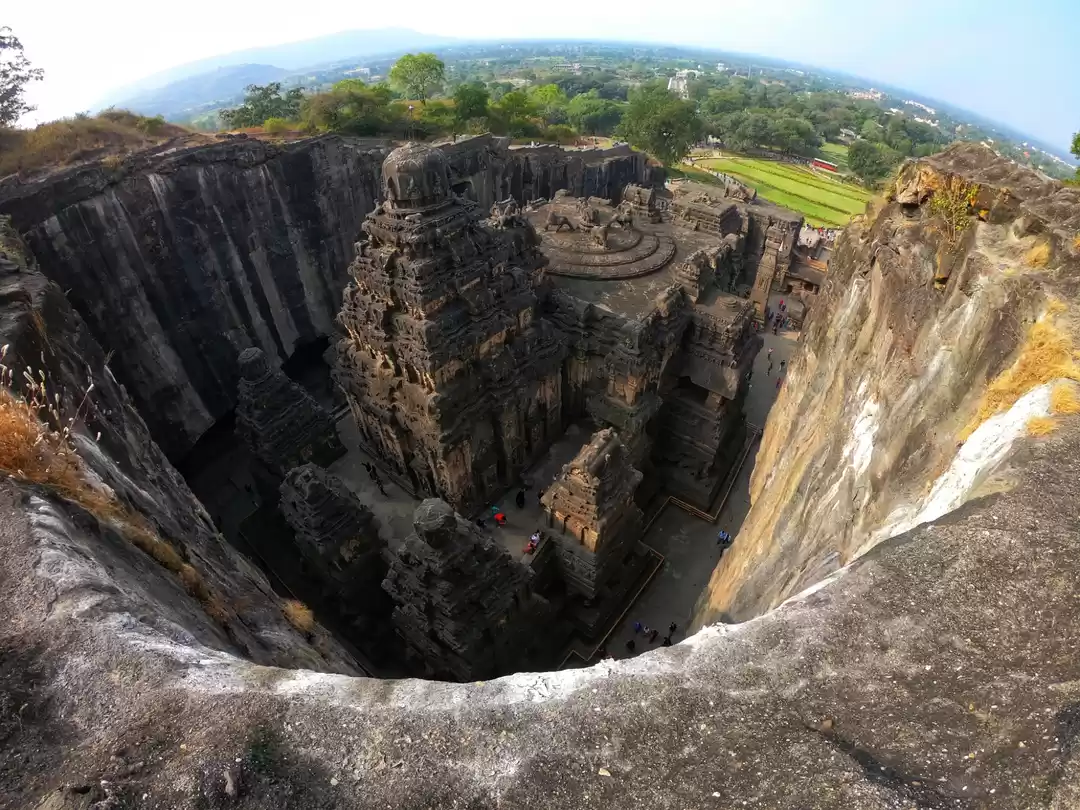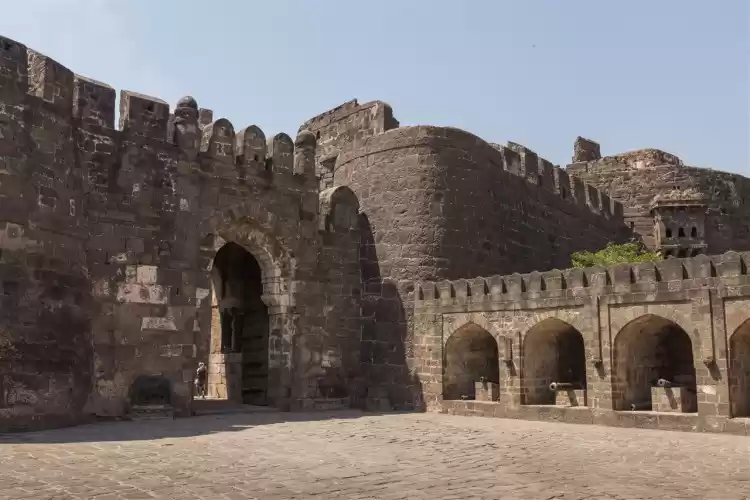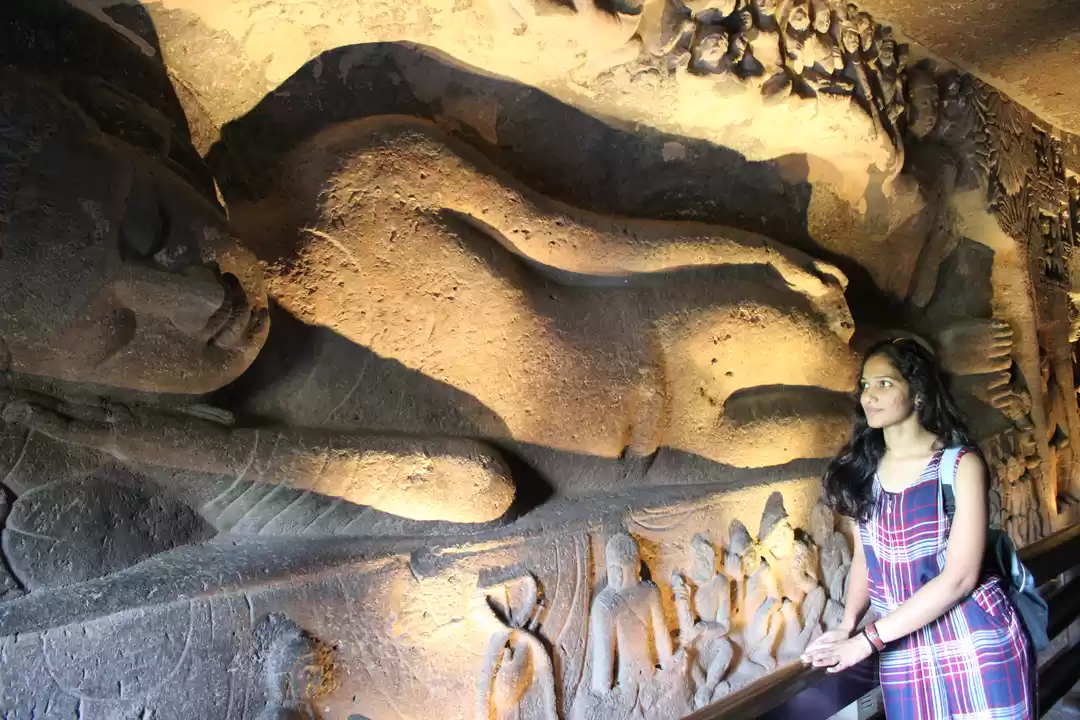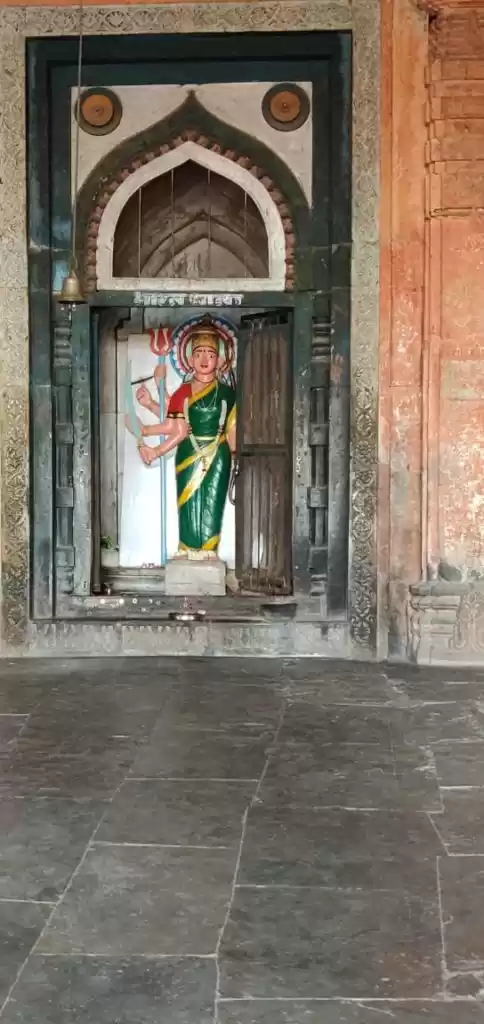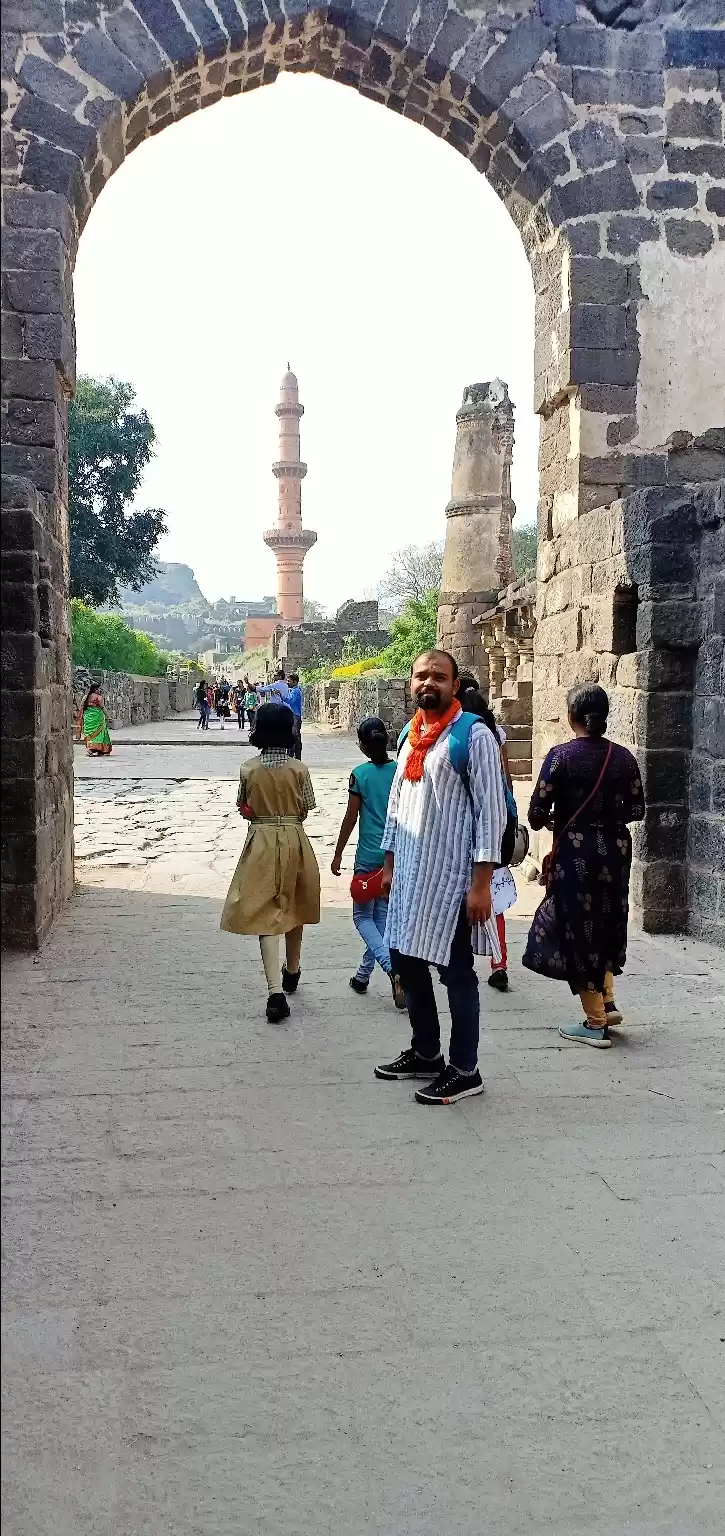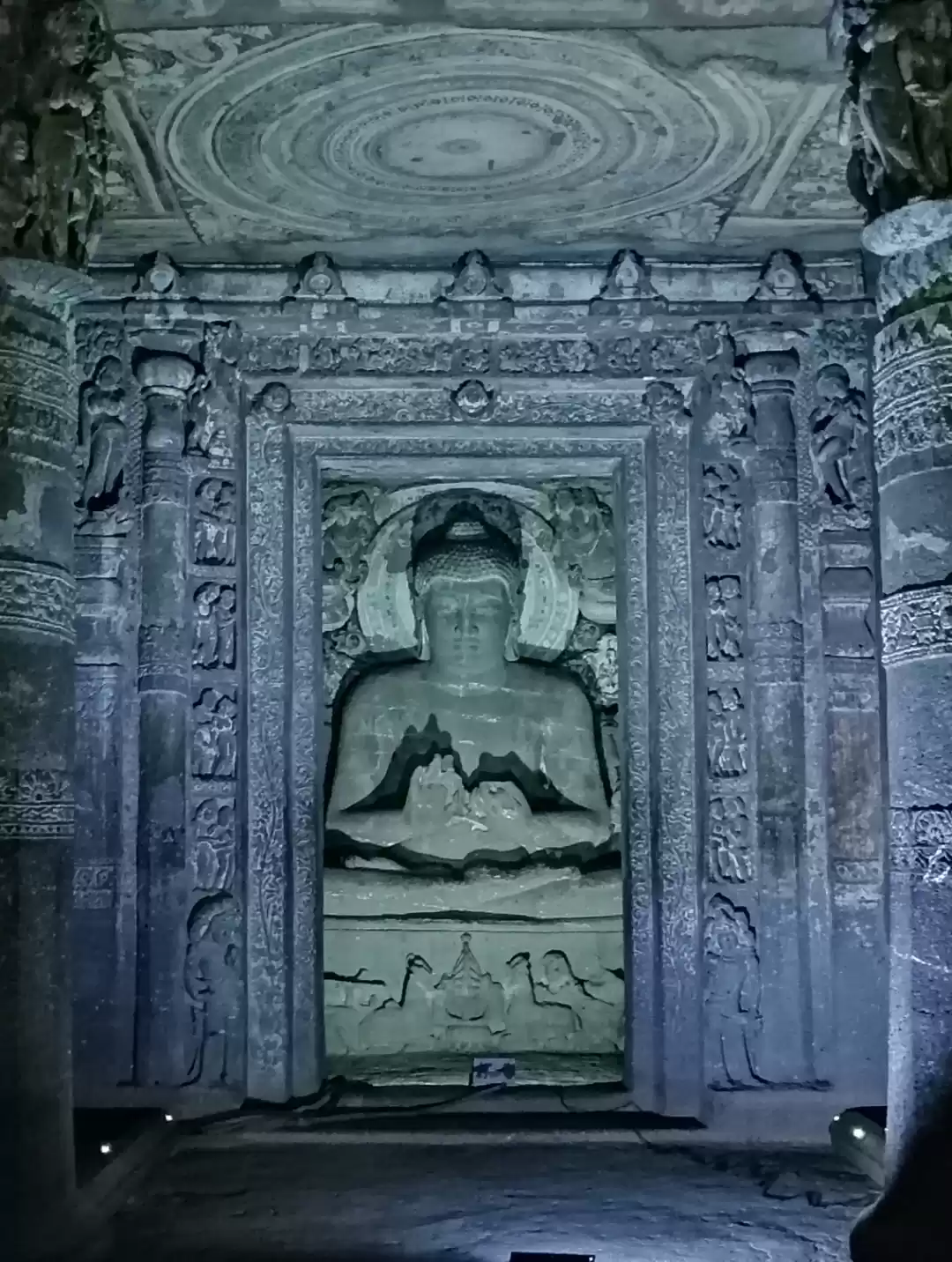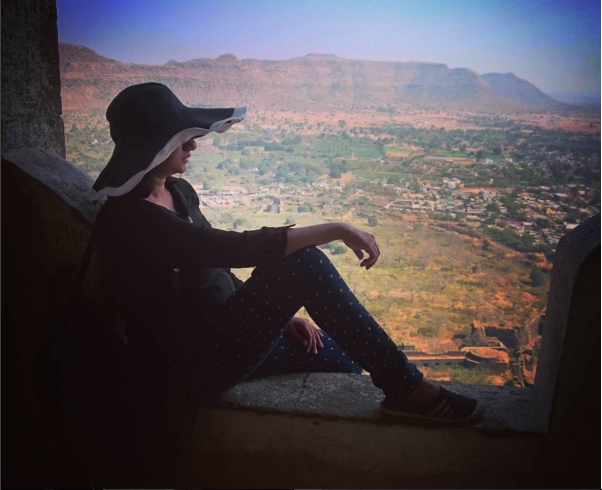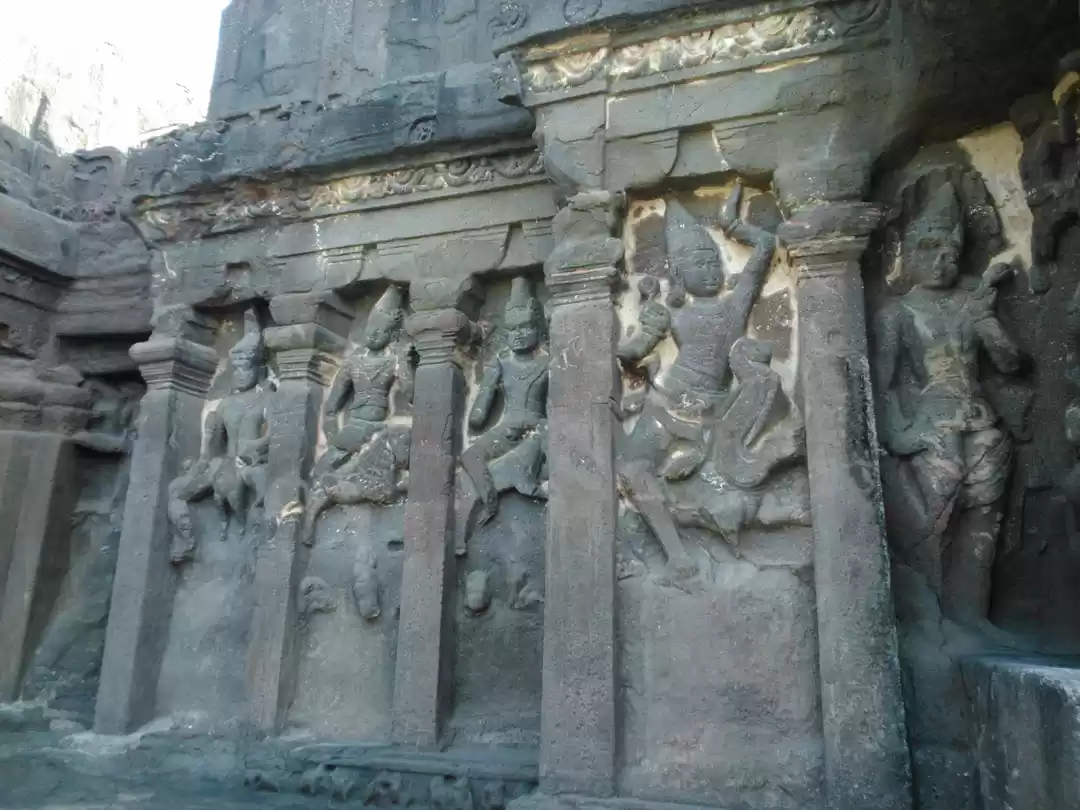
Daulatabat also known as (Deogiri fort ) A delightful blend of nature and Human architecture
Deogiri Fort : Originally this fort was known as Deogiri, a hill of gods. Which re-emerged as a strategic center of Deccan after Satvahan, Vakatak, Chalukya & Rashtrakut dynasties who ruled Deccan in the past. In 1327,A.D,Mohmmed Tughlaq, Sultan of Delhi made this fort capital of India and renamed it as Daulatabad, a city of fortune. This giant, majestic and imposing fort is built on an isolated pyramid- shaped natural mountain peak.It is 200 metre high above sea level. The rock around the fort has been chiselled so skillfully and superbly that climbing the fort was almost impossible. This fort is the combination of Ground fort & the Hill fort, which is rarely found in India.
It has two moats. One around the fort which was dry and another around the citadel which was wet, always filled with water. The fort is surrounded by three strong and imposing fortifications or ramparts. The rampart is known here as Kot. The first is Amberkot,surrounding the old town. On the way to citadel there are two Kots. First is Mahakot and second Kalakot. All the Kots have large gates and several bastions.The Mahakot has eight imposing gates. Here the defence strategy lies in the arrangement of gates. The gates are not opposite each other. Hence,an age-old practice of breaking doors by the use of elephants was impossible here.
The creation of wet moat for entering the citadel or Balekilla was the unique military strategy. After crossing the moat there was another strategy of dark passage(known as Andhari) with it’s zig-zag way for entering citadel. It is simply amazing. Inside the fort all the bastions had big canons. Due to above all the citadel was invulnerable & Invincible. It was conquered only by treachery.
At the starting point of the Amberkot,a small temple of Rasai Mata is carved out into the steep rock of the fort.It looks as if the whole fort is resting on her fingers. This point offers you an immensely fascinating view of this fort. The historic town of Daulatabad was located between the fort and the Amberkot. Only the Amberkot is still existing in dilapidated condition. Many kings, sultans & emperors have created history by entering this fort.
The fort is also venerated by the presence of holy, sacred persons. Sant Dynaneshwar visited this fort. Great authors like Hemadri, Bopdev and Narendra flourished here.Hemadri has laid the foundation of Hemadpanti style of tempies at this fort. Hemadpanti style temples are still found all over Maharashtra. Sant Janardan Swami was Quilledar of this fort. He was the Guru of Sant Eknath Maharaj of Paithan. Eknath Maharaj had stayed here for six years.

HATHI HAUD (Elephant Tank)
Being a huge water tank it came to be known as an Elephant Tank.It is 47.75 metre in length,46.75 metre in width and 6.61metre deep.It has steps in three sides. A sound of clapping produces echo on this tank. ARRANGEMENT OF WATER SUPPLY -There was a perfect arrangement of regular water supply to the fort and the township. The construction of Hathi Haud, Saraswati & Kacheri wells on the plains of the fort and Moti & Hathi natural tanks on the citadel were the main sources of water. The wet moat was always full of water. In the town, there were Shakkar Bawadi,Kada Bawadi & other wells.
A TEMPLE OF SHRI BHARAT MATA(Mother India)
Just near the Hathi Haud,is a dome-shaped huge gate. Inside, there is a vast open courtyard.And beyond courtyard amidst the rows of carved pillars there is a beautiful standing Image of Bharat Mata. In the courtyard, there are ruins of broken columns with decorative carvings, standing in rows, remind us the splendour and majesty of this historical temple. This temple might have been built during the regime of Yadavas. The present image of Bharat Mata was installed here immediately after the Nizam’s Hyderabad state became the part of Independent India on 17th September 1948

CHAND MINAR
The right side gate of the temple leads us straight to a high tower which is located between Mahakot and Kalakot. This tower is now distinctly visible from every corner of the fort. It is known as Chand Minar. It has three floors and is 65 metre high. It is only second highest after Qutab Minar in Delhi. It was decorated with glazed Persian tiles. It has a spiral staircase built within it. Visitors are not allowed to climb the Minar. This Minar is supposed to have been erected during the regime of Sultan Ahmed Shah Bahamani at about 1447 A.D. A museum is being set up just near the Minar.

CHINI MAHAL(Chini Palace)
This palacial building was known as Chini Mahal as it was decorated with coloured China clay tiles. Later, it served as a prison for royal captives. The last king of Golkonda Abul Hasan Tanashaha, the last king of Bijapur Sikandar Adilshaha, Ganapati the last king of Kakatiya dynasty of Warangal were kept as prisoners in this Mahal.
MENDHA TOPE (Canon with Ram’s head (Big horn sheep)
In front of the moat and between Chini Mahal & Nizamshahi Mahal there is a bastion on which a huge canon is kept. As its rear end is shaped like a ram’s head it is called Mendha Tope. As per the inscription on it,it’s name is Qila-shikan-Tope meaning fort-breaking canon. It was skillfully mounted on the bastion so as to keep it rotate.On this canon name of emperor Aurangzeb & name of its artisan Md.Arab are engraved. Also towards the mouth of this canon there is an inscription from the Holy Quran.

ANDHARI PASSAGE:
As we cross the bridge we enter the original fort of Deogiri built by Yadavas. It is also a starting point of citadel. Immediately, we come across an underground passage completely carved out of rock. It’s entrance is like a cave. It is a starting point of the steep & zig-zag underground passage. This ascending path is nearly 50 metre long having steps inside. This whole passage is called here as Andhari. As we enter this Andhari we experience the real meaning of darkness. While crossing this passage Mashal (Torch of flame) is used from the earlier times to the present day ( we used mobile torch) . While in this passage we realize how Andhari is the appropriate name of this passage. In addition to pitch darkness, several deceptive devices used in this Andhari are simply astonishing. A small opening for light & air could mislead the enemy to fall straight into the moat. The last device was the large hot pan kept on the exit of the passage. The whole concept of Andhari as a technique of defence is simply amazing .

BARADARI :
The only intact building remained in the fort . The octagonal Palace has twelve arches hence Baradari ( bara – 12 , dari – door ) It was built during the regime of Mogal emperor Shah Jahan. It presents the elighful and panoramic view of the fort and surrounding hills is amazing.

Google map : https://goo.gl/maps/rnsZYX1zsRsBPjDX8
https://www.instagram.com/sheetal_vibhuti/
By Air :
At about a distance of 22kms from the fort is the Aurangabad Airport .From the airport transport facilities are available .
BY RAIL:
Aurangabad Railway Station is located at about a distance of 15km from Daulatabad Fort. The Devagiri express train is also another means of reaching Daulatabad. This train connects Aurangabad to cities like Secunderabad and Mumbai. After reaching the railway station the tourists hire cars or even avail buses to visit to the fort.
BY ROAD:
Aurangabad is very well connected with the National Highway popularly known as the “Aurangabad-Ellora Road” which is at a distance of 20km from Daulatabad.
Cheers
Sheetal Vibhuti (Escaping Soul )


